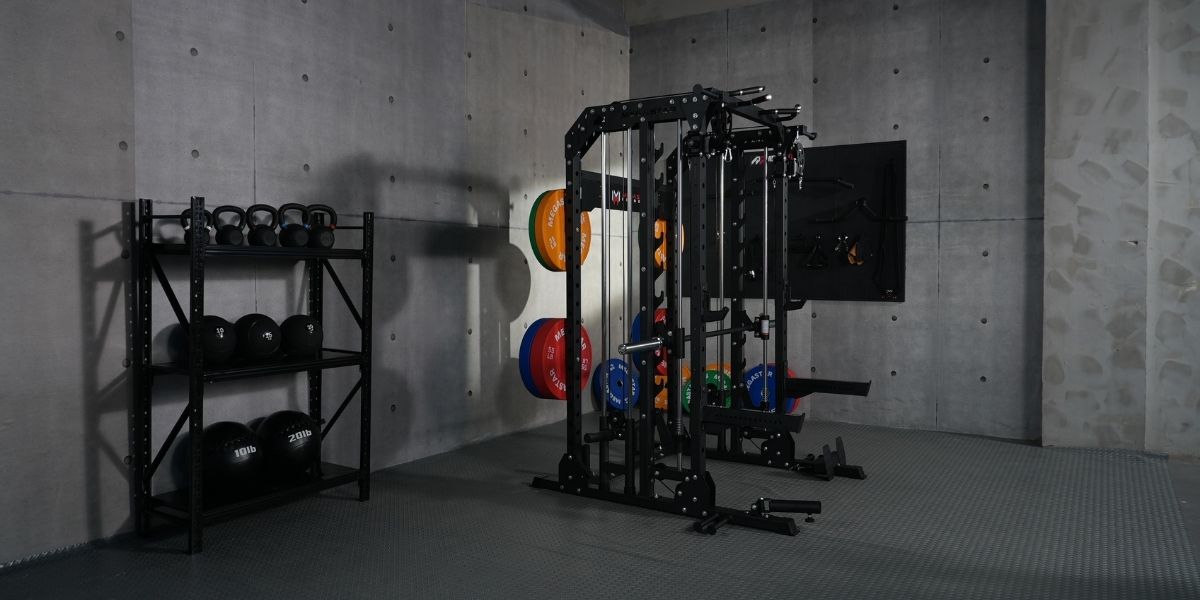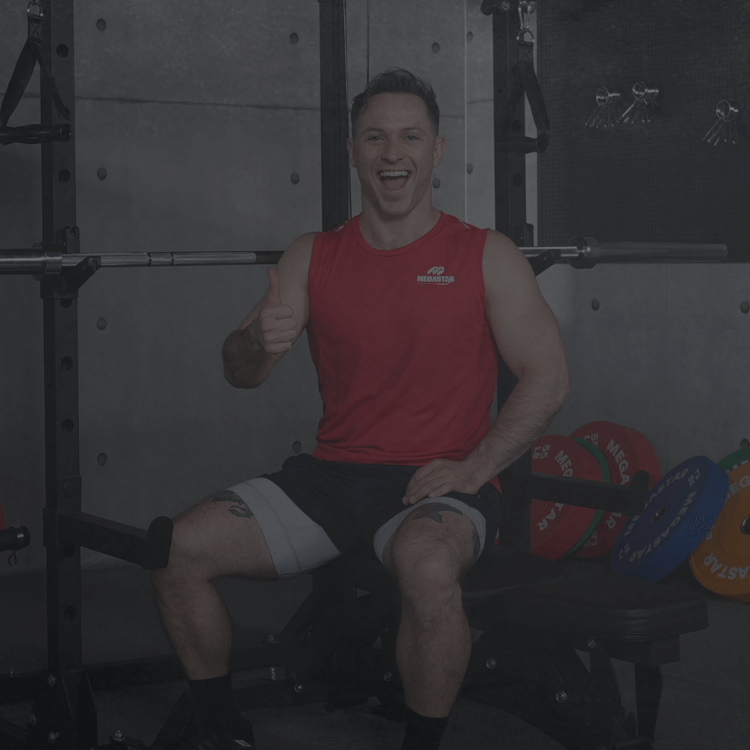When it comes to building stronger, more defined glutes, the hip thrust has become one of the most effective exercises. However, there are two well-liked variations: the barbell hip thrust and the Smith machine hip thrust. It can be difficult to decide between them. In this article, we’ll break down the differences between these two variations, helping you decide which one fits your goals, body type, and experience level.
To make things easier, we’ve included a quick comparison table to help you visualize the key differences between the two exercises:
|
Feature |
Smith Machine Hip Thrust |
Barbell Hip Thrust |
|
Best For |
Beginners and comfort |
Advanced lifters looking for progressive overload |
|
Muscle Engagement |
Good for glutes, less stabilizer use |
Full glute activation with stabilizers engaged |
|
Comfort |
More comfortable due to guided movement |
May cause discomfort from the barbell on hips |
|
Setup Time |
Quick setup with pin adjustments |
Longer setup, needs barbell, plates, and bench |
|
Space Requirements |
Compact, only requires Smith machine |
Requires more space for barbell and bench setup |
Now that you've seen the differences, let's look deeper into what distinguishes each option and how to choose the best one for you.
Understanding Hip Thrusts
What is a Smith Machine Hip Thrust?
The Smith machine hip thrust uses a machine with a barbell fixed to vertical rails, guiding the barbell's path. This helps with stability and control during the movement, making it easier to perform the exercise correctly. It’s a great option for beginners because the machine provides more structure and reduces the chance of injury from poor form.
Benefits of the Smith Machine Hip Thrust:
-
More stability: The fixed path reduces the need for balance, allowing you to focus on the glute contraction.
-
Comfortable for beginners: The stability of the machine takes the guesswork out of the movement, which is great for those new to hip thrusting.
- Safer for beginners: The machine keeps the barbell in a controlled range of motion, minimizing the risk of injury.

What is a Barbell Hip Thrust?
The barbell hip thrust is a free-weight variation that uses a barbell loaded with weights. It involves performing a hip thrust while the barbell rests across your hips, with your upper back supported on a bench. This version requires more balance and control because the barbell is not guided by rails, making it a bit more challenging and ideal for advanced lifters looking for greater strength and hypertrophy.
Benefits of the Barbell Hip Thrust:
-
Greater glute activation: Because of the free-weight nature, you activate more stabilizing muscles, including the core and lower back.
-
Progressive overload: Barbell hip thrusts allow you to progressively increase the weight more easily, which is crucial for muscle growth.
- More flexibility: You can customize your setup, from bench height to foot placement, giving you more control over the movement.
Key Differences Between Smith Machine and Barbell Hip Thrusts
Effectiveness for Glute Growth
When it comes to glute growth, both the Smith machine hip thrust and barbell hip thrust are highly effective. However, the barbell version might give you an edge in terms of glute development due to the increased engagement of stabilizer muscles.
-
Smith Machine Hip Thrust: The machine’s fixed path makes it easier to isolate the glutes, but it reduces the activation of stabilizer muscles (like the core and lower back). This can be beneficial for beginners or people who are primarily focused on glute hypertrophy.
- Barbell Hip Thrust: The barbell allows for a wider range of motion and engages more stabilizing muscles, especially in the core and lower back. It’s the preferred choice for advanced lifters looking to maximize strength and overall glute activation.
Comfort and Safety Considerations
Comfort and safety are important when performing any exercise. While the Smith machine offers more control and stability, the barbell can be uncomfortable for some, especially when it comes to the bar digging into the hips.
-
Smith Machine Hip Thrust: The machine provides more back support and ensures a stable range of motion, reducing the risk of injury. It’s generally more comfortable because you don’t have to worry about balancing the barbell or adjusting your position frequently.
- Barbell Hip Thrust: The barbell can be uncomfortable on the hips, especially if you’re lifting heavy. However, using a hip pad can help reduce this discomfort. Additionally, the barbell version requires more focus on form and stability, which can be challenging for beginners.
Which Variation is Right for You?
Choose the Smith Machine Hip Thrust if...
-
You’re new to hip thrusts or strength training and want a safer, more controlled movement.
-
You prefer a comfortable option that doesn’t require as much setup time.
-
You’re focused on glute development and don’t mind using a fixed path for better stability.
Choose the Barbell Hip Thrust if...
-
You’re an experienced lifter who wants to lift heavier weights and challenge your muscles.
-
You’re looking for greater muscle engagement and want to activate more stabilizer muscles (core and lower back).
-
You want to overload by adding more weight and improving strength progressively.

How to Perform Each Exercise Correctly
How to Do a Smith Machine Hip Thrust
-
Position your back: Sit on the floor with your upper back resting against the Smith machine bench. Make sure your shoulder blades are in a comfortable position.
-
Set the bar: Adjust the Smith machine bar to be at your hip level. Place a hip pad over the bar for comfort.
-
Foot placement: Position your feet flat on the floor about hip-width apart, ensuring your knees are at a 90-degree angle when your hips are fully extended.
-
Execute the thrust: Push through your heels, extending your hips upward. Pause at the top for 1-2 seconds, squeezing your glutes.
- Lower with control: Slowly lower your hips back down and repeat.
How to Do a Barbell Hip Thrust
-
Set up your bar: Place a bench behind you and roll a barbell over your hips. Add a hip pad for comfort.
-
Position your feet: Sit on the floor with your upper back resting against the bench. Place your feet flat on the floor with your knees bent at a 90-degree angle.
-
Engage your core: Before lifting, engage your core and brace your abs to maintain stability.
-
Lift the bar: Push through your heels to extend your hips upward. Squeeze your glutes at the top and pause for 1-2 seconds.
- Lower with control: Slowly lower the bar back down, keeping your core engaged to avoid arching your back.
Practical Considerations: Space, Cost, and Equipment
-
Smith Machine Hip Thrust: If your gym has a Smith machine, you can perform this exercise with minimal setup and space. It’s great for beginners who need the extra stability and control.
- Barbell Hip Thrust: Requires more equipment, including a barbell, weights, and a bench. If you don’t have access to a Smith machine, this is a versatile alternative that can be done at home with minimal space.
Gear Up for Your Glute Goals
Thinking about building a home gym that gives you the best of both worlds? Whether you've decided the stability of a Smith machine is right for you or you're looking to build a versatile free-weight setup, having the right equipment is key to consistency.
For those serious about investing in their fitness, Megastar Fitness offers a fantastic range of high-quality equipment to build out your perfect workout space. Their collection of Smith machines is perfect for anyone wanting to bring that controlled, safe, and effective movement into their home. You can focus on perfect form and progressive overload without ever waiting for a machine at the gym again.
Explore the Megastar Fitness Smith machine collection to find the model that fits your space and budget, and get one step closer to your strength goals.
Conclusion
Choosing between the Smith machine hip thrust and barbell hip thrusts depends on your experience level, comfort preferences, and goals. If you're a beginner or looking for a more controlled, comfortable option, the Smith machine is a great choice. However, if you want to maximize glute activation and progressive overload, the barbell version will provide more flexibility and strength-building benefits. Both exercises are practical; choose the one that best suits your training style and goals!
FAQ
Can I do hip thrusts at home?
Yes! If you have a barbell and bench, you can perform barbell hip thrusts at home. For the Smith machine, you'll likely need a gym setup as it requires the machine.
Is the Smith machine hip thrust easier to perform?
Yes, the Smith machine provides more stability, which makes the movement easier to perform and safer for beginners.
How do I avoid discomfort when doing barbell hip thrusts?
Use a hip pad to cushion the bar, and ensure your bench is at the right height for comfort. Also, keep your form in check to avoid unnecessary strain.
Can I switch between Smith machine and barbell hip thrusts?
Absolutely! Mixing both variations can help target the glutes from different angles and improve overall strength and muscle development.







